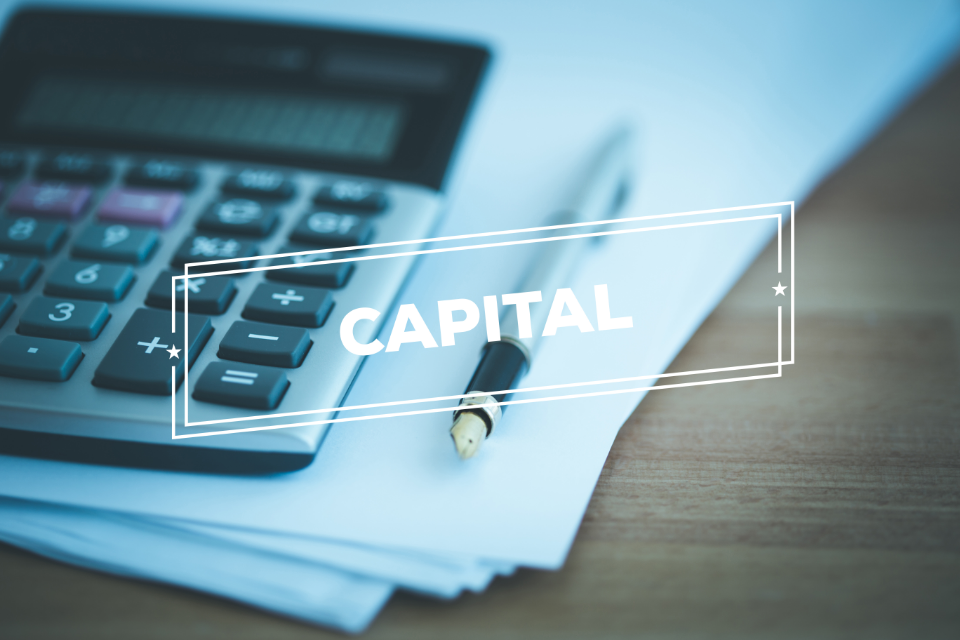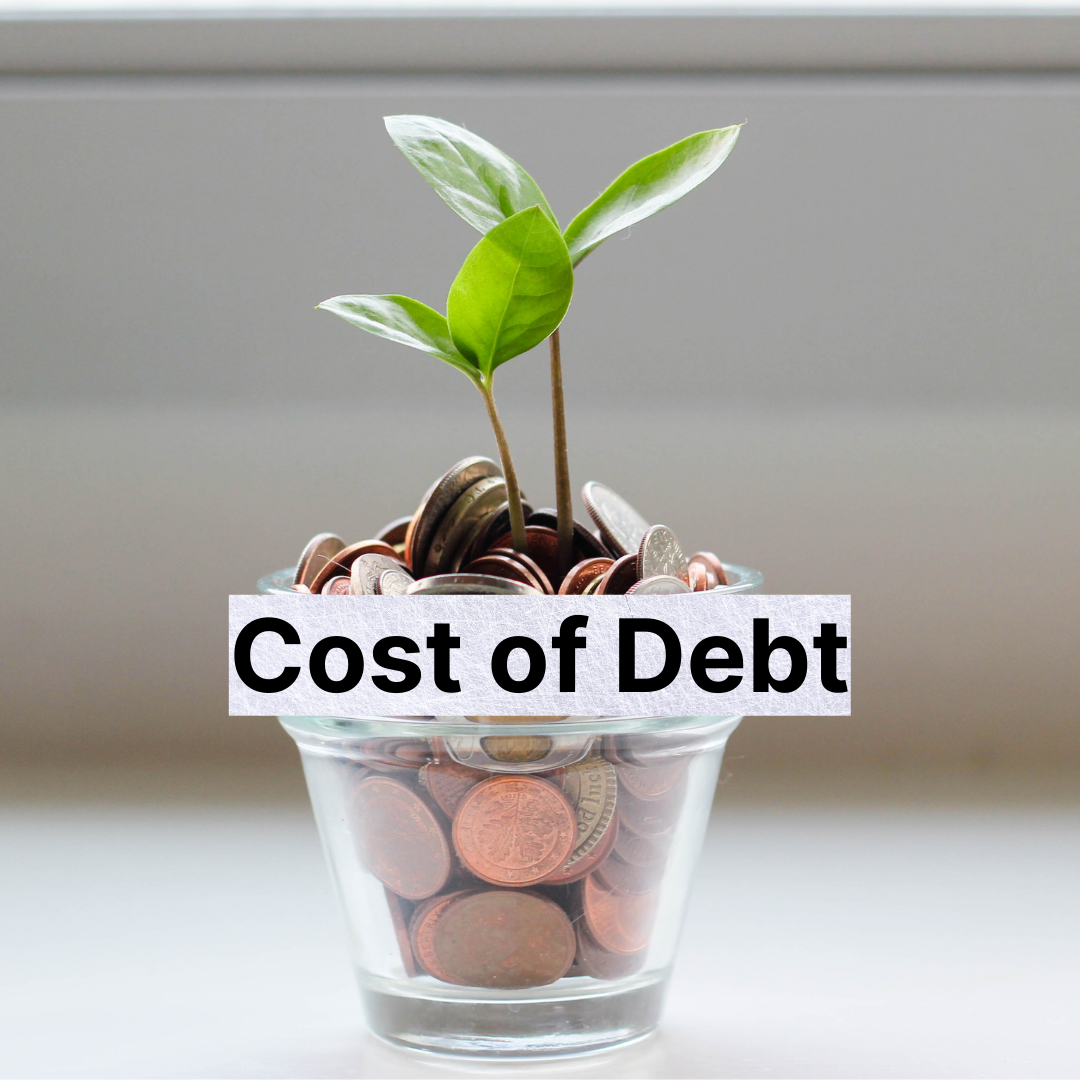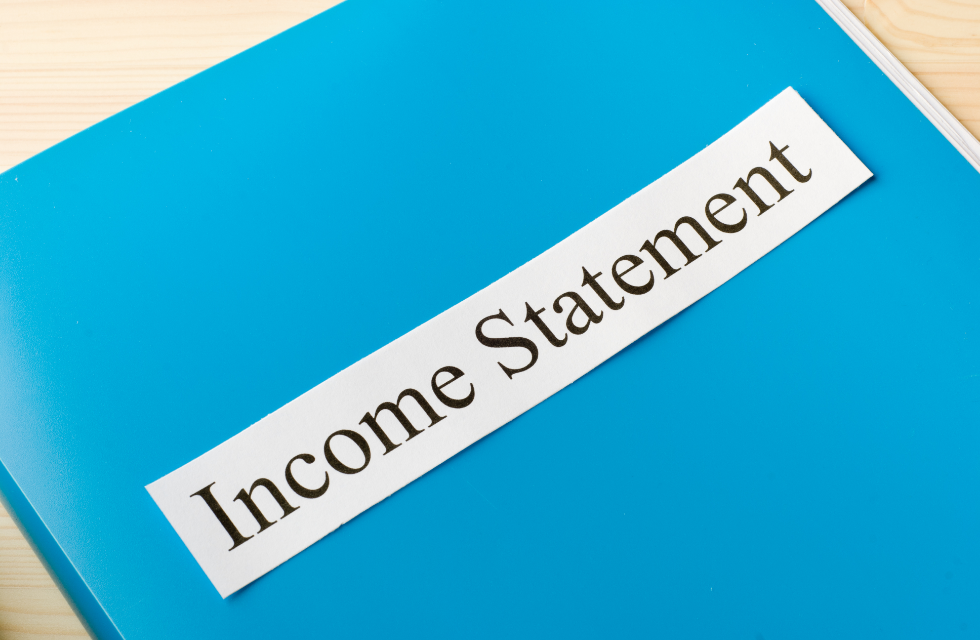How do companies reflect their business operations and measure their profitability for each financial year? The balance sheet, income statement, and statement of cash flows are the three crucial financial statements that help a company in measuring its profitability and business operations.
To put it in simple words, the cash flow statement is used to depict how effectively a company is managing its cash to fund its operations and expansion. The major role is played by the balance sheet and income statement. Let’s examine them and the key differences between them, in this article.
Balance Sheet Vs. Income Statement, In A Nutshell
The balance sheet depicts your company's assets, liabilities, and equity — in other words, its financial health at a given point in time. It assists you in determining if you have the funds to meet your costs and other financial commitments.
The income statement depicts a longer-term picture of your entire revenues and costs, as well as how the business is functioning. This knowledge is crucial, especially if you're a new entrepreneur. It prepares you for situations when you may need to pivot rapidly in order to get better results.
Balance Sheet: An Overview
The balance sheet is the foundation of a company's financial statements, serving as a reflection of the company's financial situation at a given point in time.
It consists of the firm's assets, liabilities, and owner's equity, which comprises money initially invested in the company as well as any retained earnings attributed to the owners or shareholders.
Represented by the following equation, it is separated into two columns:
Liabilities + Shareholders' Equity = Assets
This equation is the cornerstone of a balance sheet, with assets equaling liabilities and owner's equity in one column and liabilities equaling equity in the other.
The balance sheet is a single statement that summarises the company's performance since its formation, including every single transaction, the money raised, the debts incurred, the assets acquired, and their current values.
Financial ratios such as debt-to-equity, which represents the company's ability to pay its debts to equity, and the current ratio, which divides current assets by current liabilities to evaluate the company's ability to meet its obligations over the next 12 months, provide an overview into the company's operations, finances, and future prospects.
Things Included in the Balance Sheet
At the end of each accounting period, the balance sheet shows assets, liabilities, and owner's equity.
Assets
- Cash and Cash Equivalents: This number, which is shown under current assets, indicates the value of the company's cash at the end of an accounting period, as well as other cash equivalents, such as marketable securities and short-term deposits.
- Accounts Receivable: This is a debt due to a firm for products and services that have been supplied but have yet to be paid for. It is reported under current assets on the balance sheet and can be used as collateral for borrowing money.
- Inventory: It includes final products that are ready to sell as well as raw materials used in the manufacture of goods or services. Inventory is also included in the category of current assets.
- Plants, Property, Intellectual Property, and Other Long-Term Investments: These long-term assets are those that cannot be converted into cash fast, aren't immediately utilised in the manufacturing process, and have a life of more than a year are all examples. Trademarks, copyright, and goodwill are examples of this form of property. They're depreciated or amortised dependent on how much they're used or how much they're worth. On the balance sheet, they are categorised as non-current assets.
Liabilities
- Debt: Any money due to lenders, banks, or suppliers is referred to as a debt. Based on whether they are long-term or short-term debts, they might be classed as current or non-current liabilities. Future repayments are included in the present share of long-term debt, even for long-term loans.
- Accounts Payable: It refers to the company's unpaid invoices to suppliers and vendors for products and services rendered. These obligations are categorised as current liabilities since they are short-term and frequently due within 90 days.
- Underfunded Pension Plan: Underfunded pension plans are those that have more liabilities than assets and are unable to satisfy current or future commitments. They're frequently classed as a non-current obligation, and the corporation is responsible for paying and filling in the gaps as they emerge.
- Deferred Tax Liability: Taxes that have accumulated but have not yet been paid are referred to as deferred tax liability. In the case of instalments sales, the period between when the tax is owed and when payment is due, or to make up for the accrual/cash timing discrepancy, deferred tax obligation frequently develops.
Owner’s & Shareholder’s Equity
In layman's terms, owner's or shareholder's equity is the total assets allocated to owners or shareholders in the case of the company's bankruptcy, after all, debts and liabilities have been paid.
In this section of the balance sheet, return on equity (ROE) is determined by dividing net income by shareholder's equity. Management's ability to deploy and drive returns based on equity is measured by ROE.
Retained earnings - The percentage of net income that hasn't been given to shareholders as dividends – are also included in shareholder's equity and can be utilised to support the company's future development and expansion.
Example of a Balance Sheet
ABC Pvt Ltd
Balance Sheet
As of December 31, 2020
|
Assets |
Amount (in Rs.) |
|
Current
Assets |
|
|
Cash |
50,000 |
|
Accounts
Receivable |
15,000 |
|
Inventory |
30,000 |
|
Total
Current Assets |
95,000 |
|
Long-Term
Assets |
|
|
Property,
Plant, and Equipment |
1,50,000 |
|
Accumulated
Depreciation |
20,000 |
|
Total
Long-Term Assets |
1,30,000 |
|
Total Assets |
2,25,000 |
|
Liabilities
& Equities |
|
|
Current
Liabilities |
|
|
Accounts
Payable |
20,000 |
|
Taxes
Payable |
3,000 |
|
Unearned
Revenue |
1,500 |
|
Total
Current Liabilities |
24,500 |
|
Long-Term
Liabilities |
|
|
Notes
Payable (due to 6/3/23) |
25,000 |
|
Total
Long-term liabilities |
25,000 |
|
Total Liabilities |
49,500 |
|
Equity |
|
|
Retained
Earnings |
1,25,500 |
|
Owner
Capital |
50,000 |
|
Total
Equity |
1,75,500 |
|
Total Liabilities & Equity |
2,25,500 |
Conclusion: The assets and liabilities are both equal and balanced.
Income Statement: An Overview
The income statement, often known as the profit and loss (P&L) statement, highlights a company's financial performance over time by presenting revenues, cost of goods sold, overheads, and net profit attributable to shareholders.
A firm's profit and loss statement are one of three important financial statements it issues, either quarterly, yearly, or both if it's a public corporation. It keeps track of earnings, revenue sources, costs, and budgets, allowing the organisation to respond to deviations from expectations. The P&L statement is important to investors and lenders, especially when comparing different periods to evaluate the company's long-term trend.
With the use of ratios, the data given in a profit and loss statement can reveal profound insights to a qualified analyst. The gross and operating margin ratios emphasise a company's profitability in proportion to sales and costs; the price-earning and return-of-equity ratios analyse capital allocation efficiency, and the times-interest-earned (TIE) ratio measures a company's margin of safety in meeting debt obligations.
Things Included in an Income Statement
Sales revenues, costs, profits and losses are the four main components of the income statement. It is indifferent with cash or non-cash sales, or with any aspect of cash flow.
- Revenue: Money earned through routine business activities is included in revenue. It is the company's top line, and it indicates the total revenue earned during a given time period. It's further separated into operational revenue, which comes from a company's primary activities, and non-operating revenue, which comes from non-core sources like interest and rental income.
- Realized Gains and Losses: Often known as "other income," are one-time, non-recurring profits and losses resulting from the sale or disposition of assets. These might involve real estate transactions, minority stakes in other companies, or even a subsidiary business. A loss-making asset sale or disposal, on the other hand, is reported under "other costs" and is frequently the consequence of assets selling for less than their balance sheet assessments during the given time.
- Expenses: This category comprises all expenditures incurred in the ordinary course of business, such as the cost of goods sold (COGS), which is the direct cost of materials and labour involved in the creation of goods and services. Expenses also include depreciation or amortisation of assets depending on usage or fixed schedules, which are not directly related to the production process but are necessary for the organisation.
- Net Income/ Loss: The income statement's bottom line, commonly known as the net profit or loss for the period, is the net profit or loss for the period. After realising profits and eliminating costs and losses, you're left with a net profit or loss. This is the amount that can be attributed to shareholders.
Example of an Income Statement
ABC Pvt. Ltd.
Income Statement
For the Year Ended on December 31, 2020
|
Revenue |
Amount (in Rs) |
|
Net
Sales |
92,000 |
|
Interest
Income |
3,000 |
|
Other
Income |
1,500 |
|
Total
Revenue |
96,500 |
|
Costs
& Expenses |
|
|
Costs of
Goods Sold |
32,000 |
|
Wages |
40,000 |
|
Advertising |
2,000 |
|
Repairs
& Maintenance |
1,000 |
|
Rent/
Lease |
20,000 |
|
Delivery/
Freight Expense |
1,000 |
|
Utilities/
Telephone Expenses |
5,000 |
|
Insurance |
1,000 |
|
Office
Supplies |
1,500 |
|
Depreciation |
15,000 |
|
Meals |
500 |
|
Entertainment |
2,000 |
|
Other
Expenses |
1,000 |
|
Income
Before Taxes |
1,22,000 |
|
Tax
Expense |
7,000 |
|
Net
Income (Loss) |
(32,500) |
Conclusion: The company is facing net loss of RS 35,500.
The Difference Between Balance Sheet and Income Statement
The income statement and the balance sheet vary in a number of ways, which are described below.
- Timing
The balance sheet shows the state of an organization's financial standing at a given point in time, whereas the income statement shows the firm's performance over time. A balance sheet as of December 31 and an income statement for a similar month, for example, will be included in financial statements for the month of December.
2. Items that get reported
The income statement shows revenues and costs that net to a profit or loss, whereas the balance sheet reports assets, liabilities, and equity. Any tax cost appears on the income statement, while any outstanding tax liabilities appear on the balance sheet.
3. Metrics
The balance sheet's various line items are compared to each other to define a company's liquidity, while the income statement's subtotals are compared to sales to calculate gross margin percentage, operating income percentage, and net income percentage.
4. Uses of Both Statement in Management
The income statement is used by management to evaluate performance and identify any operational or financial defects that need to be addressed, whereas the balance sheet is used by management to determine if a company has the liquidity to meet its obligations.
5. Uses of Both Statement by Creditors & Lenders
The balance sheet is used by creditors and lenders to determine if a company is over-leveraged, which tells them whether they should give extra credit to the company. They evaluate the income statement to determine if a company is profitable enough to pay off its debts.
6. Comparative Importance
The value of the two reports varies depending on the reader, but the common consensus is that the income statement is more important than the balance sheet since the income statement reveals the company's performance. A lender, on the other hand, would choose to look at the balance sheet, which it can use to determine a loan applicant's liquidity.
Do They Have Something Similar Between Them?
Despite the various differences between the income statement and the balance sheet, there are a few key similarities. Together with the cash flow statement, these are two of the three most important financial statements. Even though they are employed in distinct ways, creditors and investors consider them both while selecting whether or not to invest in the firm.
While the income statement and balance sheet are used to examine distinct types of information, both statements are crucial to banks and investors because they offer a strong indicator of a company's current and future financial health.
Which is More Crucial? Balance Sheet or Income Statement
Is there a quick answer? It is arguable. And, to be honest, how can you pick a favourite? You appreciate each and every one of your hardworking financial documents. Your income statement and balance sheet, as well as a third document called the cash flow statement (more on that later), depict the overall financial picture of your firm. Each document has its own unique abilities and personality.
Many small business owners, however, believe the income statement is the most significant since it demonstrates the firm's capacity to be successful – or how the company is functioning overall. Your balance sheet is used to determine your company's net value, which may assist you in making important strategic decisions. However, the balance sheet does not tell the full story.
Income Statement Comes First or the Balance Sheet?
This isn't like the age-old "chicken or egg" dilemma. The income statement, often known as the profit and loss statement (P&L), comes first. This is the record that shows the business's income or revenue over a given time period, as well as the costs that were paid out and removed. Your firm produced a profit if its income was larger than its expenses.
If your costs exceeded your revenue over that time period, your firm was in the red. This can be a disappointment, but it's useful information to have so you can adjust properly.
The balance sheet displays the financial health of your firm and comprises anything that wasn't covered on the income statement. However, the income statement must be completed first since the figures on that document reveal the company's profit and loss, which are required to calculate your equity.
Bottom Line
Eventually, your income statement and balance sheet may teach you a lot about your business. The balance sheet is a snapshot in time that shows everything your organisation has (assets and equity) and owes (debts) (liabilities). The income statement, on the other hand, keeps track of your revenue and costs (and, as a result, your net profit) for a certain period of time. Both financial statements may be used to assess your present situation and make strategic decisions for the future.
How Deskera Can Assist You?
Whether you are a sales manager or running your own business, there are tons of duties and responsibilities that you have to fulfill. Using the Deskera CRM system, you can manage your contacts, leads and sales deals. You can use the CRM system to manage all customer data and manage your leads, sales negotiations and deals.
Doing so will help you to save the time taken in transferring customer data between the different systems. Having a good CRM system will help you manage your financial and sales reports and be prepared to kick-off your meetings.
Deskera can also assist you with real-time updates about your business like cash flow status, customer satisfaction, inventory management, sales, purchases, purchase orders, customer tickets, customer satisfaction, managing leads, revenues, profit, and loss statements, and balance sheets.
Moreover, it would also help in integrating sales methodology across different platforms onto one system so that you have a consolidated list for email campaigns, leads management, and sales pipeline to mention a few.
It will also help you to sync between your orders, payments, taxes, refunds, product variants, sending out invoices and reminders, facilitating invoice management, and even undertaking follow-ups and advertisement campaigns.
Such a consolidated platform will help you to improve your sales through building effective sales compensation plans and also facilitate faster and well-informed decision-making. It will help you in strengthening your opportunities and being braced for the threats.
Deskera books and Deskera CRM will also be able to ensure the highest customer satisfaction and thereby an increase in net revenues and net profits.
Key Takeaways
- The balance sheet, income statement, and statement of cash flows are the three crucial financial statements that help a company in measuring its profitability and business operations.
- The balance sheet is the foundation of a company's financial statements, serving as a reflection of the company's financial situation at a given point in time.
- Assets = Liabilities + Shareholder’s Equity
- The income statement is also known as the profit and loss (P&L) statement.
- Sales revenues, costs, profits and losses are the four main components of the income statement.
- The balance sheet displays the financial health of your firm and comprises anything that wasn't covered on the income statement
Related Articles












